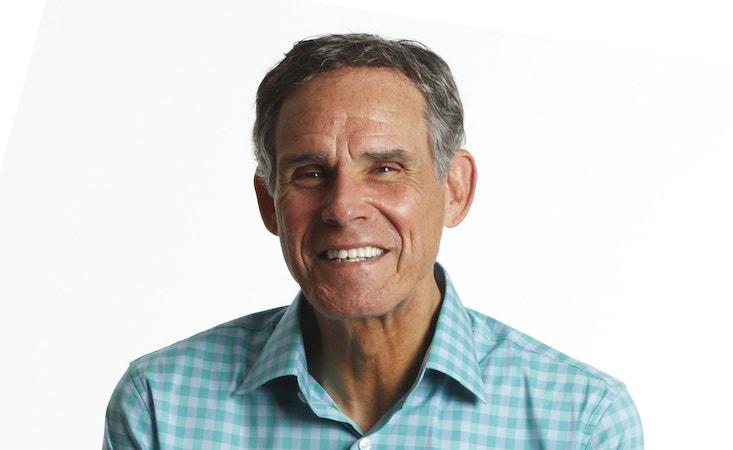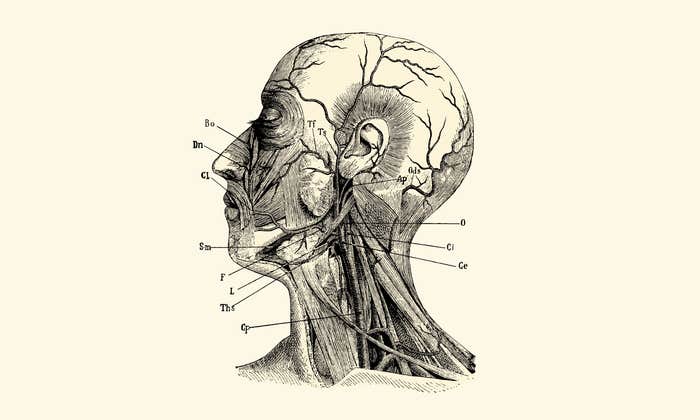The Twitter feed of Eric Topol, with nearly 300,000 followers, has become one of the go-to places for reliable updates on the COVID-19 pandemic. Topol is the founder and director of the Scripps Research Translational Institute, professor of molecular medicine, and executive vice president of Scripps Research. I first interviewed Topol in the early 2000s when he was chair of cardiovascular medicine at Cleveland Clinic. He made news as the one of the first and most public critics of the suppressed dangers of the painkiller, Vioxx, which its maker Merck withdrew from the market in 2004. Topol is the author, most recently, of Deep Medicine: How Artificial Medicine Can Make Healthcare Human Again, and is editor in chief of Medscape, a medical news site. In our conversation, Topol explained what we can and can’t expect from vaccines, what the communication breakdown over the pandemic has meant, and, surprisingly, why we can look on the bright side.

What’s on your mind today?
I’m enraged that we’re in this situation in this country. Every day I think about how we could have avoided hundreds of thousands of deaths that were mostly unnecessary and preventable. How are we going to get out of this mess that we shouldn’t have been in? There are multiple fronts that are encouraging. We’re learning to treat better and use better drugs. Our approach is going to keep getting better and make the death toll go down before there’s a vaccine.
What about “Long COVID,” the name now applied to serious symptoms that strike almost any organ in the body following recovery from acute COVID infection? In many people, the disability has lasted for months, and because the disease is new, nobody knows how long these symptoms might persist.
I’m upbeat we’ll have less deaths, but, yes, Long COVID is very worrisome. Healthy, young people are suffering from long COVID and have pretty debilitating symptoms. This is really vital to understand now. How can the virus affect many different organs for long periods of time? It’s quite disconcerting.
Have you ever seen a virus like this? One that can be asymptomatic, kill people quickly, allow some to recover, and give others a range of chronic, debilitating problems?
No, I haven’t. We now see this multi-system, inflammatory condition can be fatal for kids, who average 8 years old. Almost 2 percent of the kids diagnosed with COVID-19 in the United States, who have developed multi-system, inflammatory condition, have died from it, and the majority of them wind up in an ICU in a hospital.1 We see it in some adults. It’s debilitating, not requiring hospitalization, but they have difficulty breathing and joint aches—which are really telling—chest pain, and other symptoms that affect brain function.
The death toll will go down before there’s a vaccine.
With so many organ systems involved, it sounds like it could be an immune disorder or some kind, right?
Yes. We think there’s some immune and inflammatory reaction. That raises the question, should we be thinking of using a non-steroidal or some other type of drug as a preventive of Long COVID? The incidence of it is anywhere from 10 to 80 percent, even in young people who recover from a mild attack of COVID-19. So, yes, we need to understand the immune and inflammation background and hopefully prevent this.
What does this dangerous inflammatory response say about possible side effects of a vaccine?
A good immune response fights the infection and helps prevent it from ever getting legs. But a vaccine does introduce another set of concerns. It could set off an immune reaction of a different kind. Hopefully the tradeoff is favorable, but we’re not out of the woods. It’s something we have to keep in the front of our minds when we get to the vaccine stage, which I’m convinced we will probably next year sometime. We have to keep a close eye on the risk that you rev up the immune system in a dangerous way. After somebody has gotten a vaccine—weeks or months later—they can have an untoward immune reaction. It’s a big unknown.
In terms of vaccines and monoclonal antibodies, which go together in some ways, are we spending too much time looking at the spike protein, when there could be other targets that are more critical?
Yes, that’s a great question. There’s a lot of data on how structural biology has come into its own in this pandemic. Atom by atom, molecule by molecule of the virus has been studied and crystallized to the nth degree. The spike protein is a target but not necessarily the best target. Companies like Regeneron are looking at a cocktail of monoclonal antibodies to hit at multiple points. The idea is that there could be escape variants. We know the virus is slowly evolving, and we don’t want a person to be getting a neutralizing antibody, which should help them for two, three months, but along the way there could be some evolution of the virus, such that the antibody they got is no longer neutralizing.
Aren’t monoclonal antibodies difficult to produce and expensive? The ones on the market as drugs for autoimmune diseases and cancer often cost $100,000 a year or more.
Let’s put it this way. They’re not as expensive as what the companies charge. But to make mass quantities of these drugs for millions of people quickly, we’re not there, even with the investment that companies are getting from the government. So the drugs are going to be in relatively short supply. But they could potentially be very useful for people newly diagnosed or at high risk. Once we get large-scale production, they shouldn’t be expensive. It’s really about government subsidy and controlling the costs, which we’ve never done in this country. It doesn’t need to be $100,000. It could be $100 or less. Drugs have ridiculous charges because there’s no oversight. It’s absurd.
We shouldn’t be so down. What we really need is patience.
You’ve noted that interferons, molecules that help control the immune system, could make up other potential treatments. Where do we stand right now on that?
It’s exciting. They’re the first line of defense in our immune system and they are intrinsically important. Some companies are repurposing these drugs, which could be inhaled. Everybody at risk could have an inhaler with interferons.
What questions need to be answered as quickly as possible by your colleagues in immunology?
Much of it concerns T cells [the cells in the body that fight infection together with antibody molecules]. We know that some people who’ve been exposed to common cold coronaviruses develop a terrific T cell response to those coronaviruses. When they get exposed to SARS-CoV-2, they mount a pretty strong immune response. We suspect that when people show no symptoms, it has to do with their T cells. We learned that with the original SARS 16 years ago. We really need to understand it with this disease. Why do people die? Most people who die from COVID-19 have this unregulated immune response. They get a cytokine storm and their immune system goes into dysregulation. Anywhere you look—kids, why most people die, the asymptomatic group, vaccine prediction, antibody enhancement—you see that all roads lead to immunology.
Almost every individual and family in America has to make decisions every day that concern COVID-19. Do I go to the grocery store? Do I go to a restaurant? Do I send my kids to school? Can I safely go to work? They’re making it on the basis of Tweets like yours, or reading this kind of conversation, or whatever they rely on for news. What can we do about that? Or is that necessarily a bad thing?
If we had a real CDC, as we did in yesteryear, when you and I could expect the best public health information, the CDC would be a go-to resource, and there wouldn’t be suppression of such an entity. It would be leading the whole pandemic response instead of giving us mixed messages. What we want is consistent communication. Look at the countries that have been successful: New Zealand, Vietnam, Thailand, Taiwan, Estonia, Iceland, South Korea. They’ve had consistent communication to the public, one voice that was giving accurate information, and they built the confidence of the public rather than mistrust. We haven’t done that.
What are we losing without consistent communication?
Without the right, accurate voice, we end up with misinformation and mixed messages. You reopen states that are not ready, that go against the guidelines that work everywhere else in the world. When you try to force the opening of schools in a not-ready zone, you lose the trust of people, even ones who were anxious to reopen, or have their kids go to school. We need to build the public trust, and to do that you have to do things consistently, carefully follow simple guidelines. This is not brain surgery. This is pretty straightforward stuff. But it’s been astray for much of the time in the U.S.
What did you think of the Times op-ed, co-written by Michael Osterholm, director of the Center for Infectious Disease Research and Policy at the University of Minnesota, and Neel Kashkari, president of the Federal Reserve Bank of Minneapolis, which argued that a six-week lockdown in the entire U.S. could crush the spread of the virus?
Wouldn’t it be nice if we could have a national lockdown and get down to less than 1 case per 100,000 people? That’s the goal. The problem is, it’s a fantasy. We’re not going to do it because we don’t have the will. The economy has overridden the drive to suppress the spread. So by reopening we got what we predicted, which is a massive surge. A lockdown could stop the spread, but that’s not going to happen. You have to be realistic.
Do you see positive signs?
Yes. We have to be concerned with the biological effects of the disease. But we also have to be able to convey why, with neutralizing antibodies, and rapid tests, and other technologies, there is optimism that can pull us through. Right now we are in a pretty serious mode of despair. We need to understand why that’s not necessary. We shouldn’t be so down. What we really need is patience. We didn’t need to reopen so quickly. We just need to give it some time because a lot of good things are downstream from now.
Robert Bazell is an adjunct professor of molecular, cellular, and developmental biology at Yale. For 38 years, he was chief science correspondent for NBC News.
Lead image: Gwoeii / Shutterstock


























